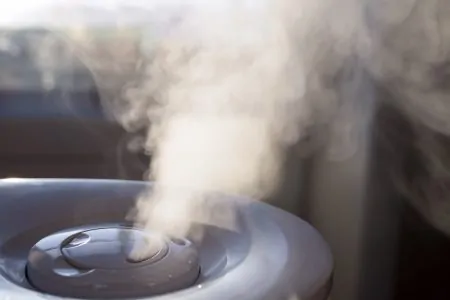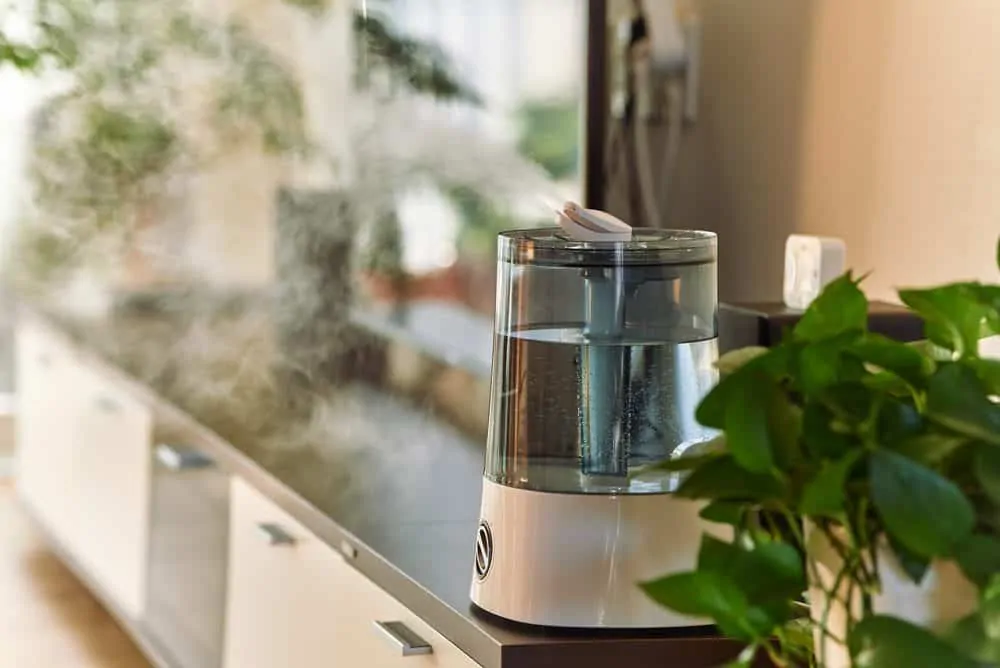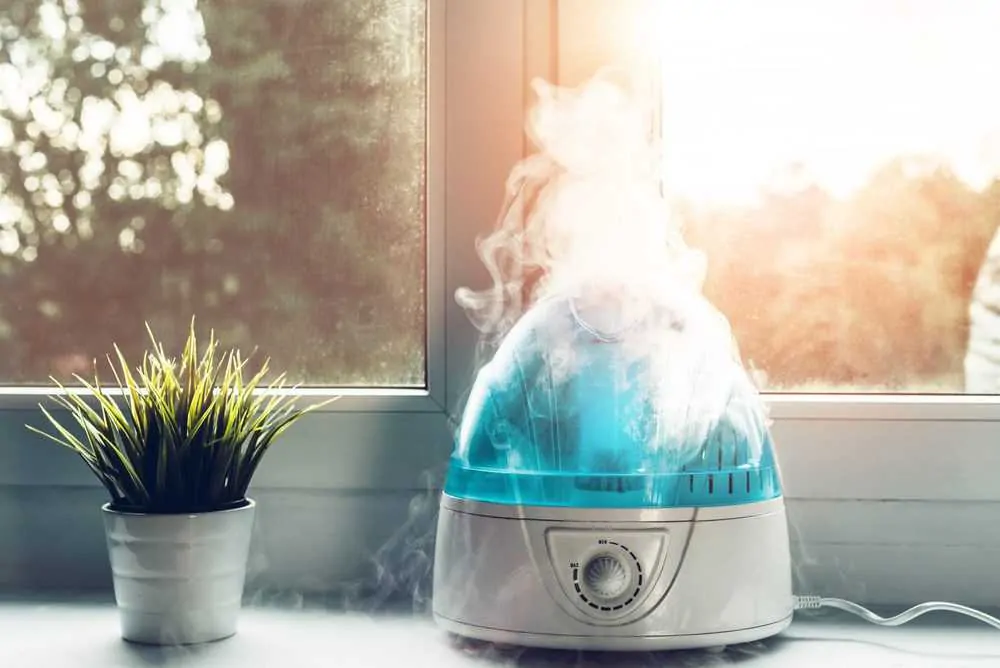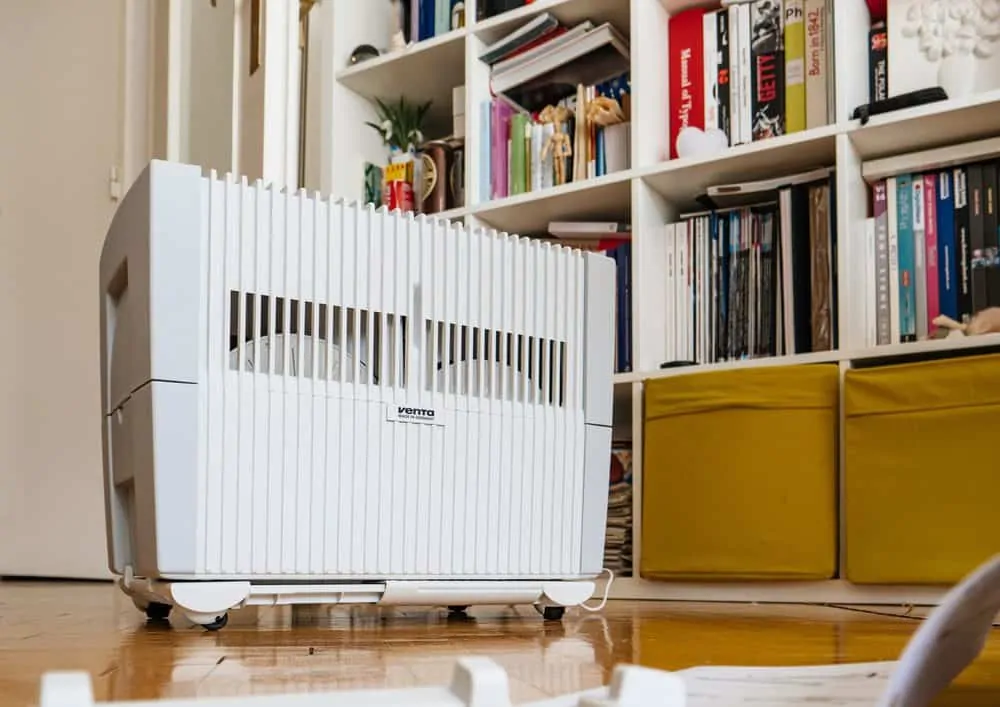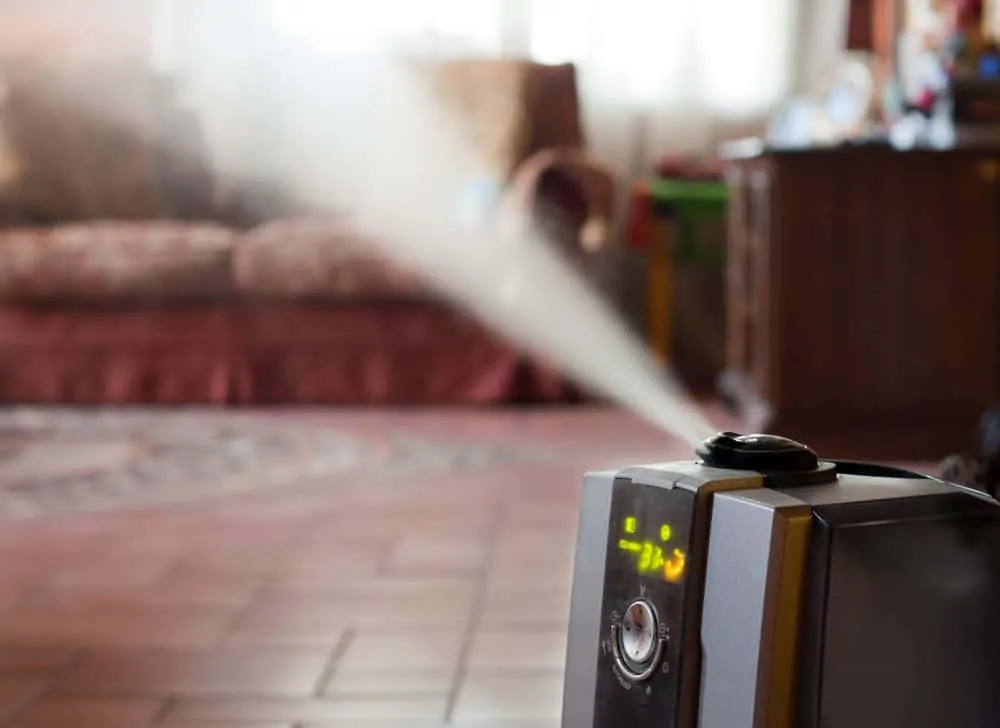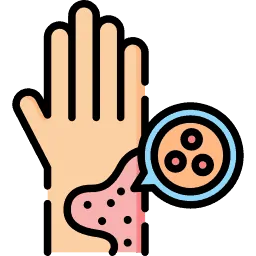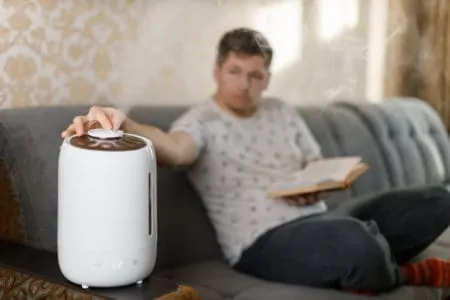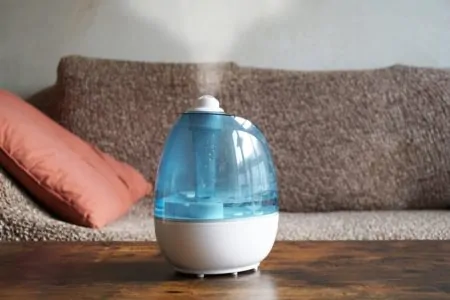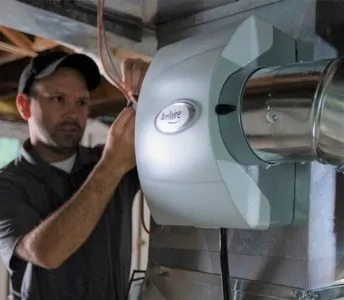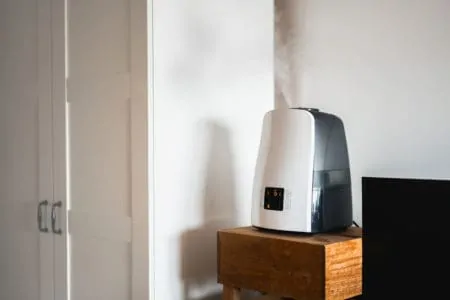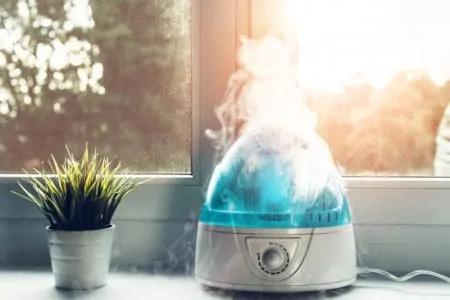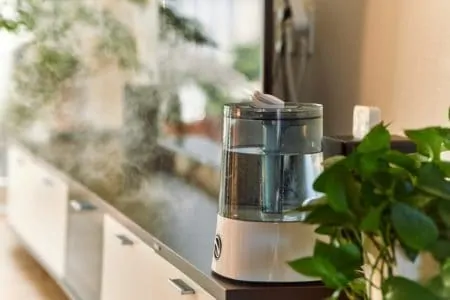It’s recommended to keep the humidity between 30 and 50 percent to create a well-balanced environment (1). However, when the humidity drops below 30, it can cause specific issues like dryness and congestion.
One fantastic option for increasing your home’s humidity is a humidifier. These handy devices are great, especially during winter or flu seasons.
But what does a humidifier do? Can it help with a cold? What are the benefits? We’re here to answer all your quizzical questions about humidifiers.
Key Takeaways
- Humidifiers work by adding moisture to the air, helping to maintain humidity levels between 30-50% for a comfortable living environment.
- Benefits of using a humidifier include preventing snoring, protecting wooden furniture, reducing static, and minimizing the spread of airborne viruses.
- It’s important to regularly clean and maintain your humidifier to prevent mold, bacteria, and other contaminants from spreading in the air.
- Be cautious of overusing a humidifier, as high humidity levels can cause issues such as dampness, mold, and indoor allergens.
How Does a Humidifier Work?
Humidifiers emit water vapor or steam into the air to increase the moisture level. They’re straightforward devices with a tank to hold the water and a control base.
There are five main types of humidifiers:
1. Ultrasonic Warm or Cool Mist
This humidifier creates a fine mist that is emitted into the air and evaporates soon after. It consists of a small metal diaphragm that vibrates at ultra-sonic speed — hence the name. Consequently, it creates tiny water particles that form the mist.
Depending on the model, some will heat the water to 104 degrees Fahrenheit — creating a warm mist. Others stay cold — creating a cool mist. Some more high-end humidifiers offer the option of warm or cool mist.
2. Vaporizer
These contain a heating element that boils the water to create steam, which is then released into the air. The steam should be cool by the time it reaches you. However, refrain from standing too close to the device while running — and keep children and pets away.
As a bonus, some vaporizers — such as the Vicks — offer the option of adding VapoPads to increase its effectiveness and help with illness.
3. Evaporative Cool Mist
Evaporative humidifiers draw dry air in over or through a moist wick in the tank. The water within the tank will begin to evaporate, and as the vapor increases, moist air is blown back into the room. During the process, heat is removed from the air, resulting in cooler air being emitted back into the room.
4. Air Washer
These devices work simultaneously to purify the air as well as humidify it. They work by drawing air in and “washing” it using rotating discs or mats.
As the air is scrubbed, large particles of dust, pollen, and other impurities are removed. Air washers produce a clean and cool mist that effectively increases the humidity.
5. Whole-House
A whole-house humidifier can humidify your entire home at one time. There are different types, including evaporative and the more expensive steam model. These are installed directly into your HVAC system.
How Is Humidity Measured?
When measuring humidity, we often use a term called “relative humidity.” The relative humidity is the ratio of moisture found in the air compared to how much moisture the air can hold. Temperature plays a significant role in humidity levels since hot air can hold more moisture compared to cold (2).
A hygrometer is commonly used to measure the relative humidity of a room. There are usually separate devices for indoor and outdoor use. Hygrometers measure the temperature and moisture level to give you exact results, such as 40 percent humidity (3).
What Affects the Humidity Levels?
Three factors can affect the humidity levels within your home:
- Temperature: As mentioned above, when the air temperature rises, the more moisture it can hold, consequently raising the humidity. On the other hand, as it gets colder, the air cannot hold as much moisture, making it drier.
- Ventilation: We utilize our HVAC systems to improve indoor air by removing hot air and replacing it with fresh air. Inadequate ventilation can lead to dampness and mold as the humidity and temperature rise.
- Your house: Both the airtightness and building materials of your home will significantly impact the humidity. Good airtightness enables you to control the temperature and ventilation better. Some building materials, such as reinforced concrete, can make it tricky to control condensation. In comparison, newer materials like wood-based cellulose fiber absorb moisture (4).
What Are the Benefits of Humidifiers?
During the winter, the air tends to be cold and crisp — cue the chapped lips and flaky skin. However, with a humidifier, you can get through winter without feeling moisture-deprived. Here are a few benefits of humidifiers:
Prevents Snoring
Whether you’re the snorer or the person who has to listen to it all night, it can be very frustrating. If you tend to breathe through your mouth while sleeping, you will likely wake up feeling dry.
Run a humidifier at night to help soothe your throat and nose from the dryness. It will help you to sleep more comfortably while also minimizing snoring.
Beneficial to the Home
If you have wooden floors or furniture, keeping the humidity balanced can help the wood last longer. Furthermore, if you have houseplants, these will benefit from a little extra moisture in the air.
Prevents Static
Have you ever noticed how frizzy your hair can get during the winter? Or do you notice static electricity when removing the sheet from your bed? Dry conditions in your home can cause this.
Static electricity isn’t just annoying; it can also be dangerous if it builds up, as it can damage certain electronics. Higher humidity can help to prevent or lessen static.
Helps to Prevent Spreading of Airborne Viruses
Recent studies showed that airborne viruses were least likely to spread when the humidity was at least 43 percent. The study showed that nearly 85 percent of viruses were virtually ineffective in more humid conditions (5).
Moisture can prevent the movement of germs since they drop to the nearest surface when combined with moisture. As a result, it’s more difficult for germs to spread through the air. This gives you a chance to clean and remove them.
What Are the Disadvantages of Humidifiers?
There are many advantages to humidifiers, but they aren’t without flaws.
Contamination
Although humidifiers are highly beneficial, they can become a breeding ground for mold and bacteria. This isn’t just filthy to look at; it can also cause bacteria and mold to spread through the air. As the water in the tank becomes vapor, so do the contaminants.
Keep In Mind
High Humidity
If your air is dry, using a humidifier is beneficial. However, if you overuse it, you can create a new problem: high humidity.
According to the EPA, humidity levels of 60 percent and more are considered high. With high humidity levels, dampness and condensation are likely to occur. This can lead to dust mites, mold, mildew, and other indoor allergens (6).
Keep Track
Does a Humidifier Help With…
What Humidity Should I Set My Humidifier To?
Humidity levels below 30 are too dry, and above 60 are too high. We recommend setting your humidifier to 40 or 45 percent for optimal humidity.
How Much Does a Humidifier Cost?
Depending on the type, whole-house humidifiers can cost between $100 and $700.
Evaporative humidifiers are less expensive compared to steam humidifiers.
With whole-house humidifiers, you also have to consider installation fees. These can range between $350 and more than $800 (11).
Depending on the model and size, small humidifiers can cost anywhere between $15 and $100.
Cleaning and Maintenance of a Humidifier
Taking care of your humidifier is crucial to prevent air contamination. Daily maintenance includes emptying and refilling the tank. You should flush the tank using white vinegar once or twice a week to remove potential mold or mineral build-up.
You can sanitize the tank using bleach, peroxide, or pure vinegar when needed. Always unplug the humidifier before cleaning or doing maintenance. Never use other chemicals to clean the tank since it can be damaged or cause the chemicals to spread through the air.
FAQs
Humidifiers Have Their Place
We all hear about people who use humidifiers during the winter to ease congestion and other issues like dry skin. They also prevent snoring, can protect your home, and reduce static.
Although humidifiers are very beneficial, they can do more harm than good if not used properly. It’s crucial to keep your humidifier well-maintained to avoid mold and bacteria from building in the tank. Nonetheless, a humidifier can easily keep your home environment comfortable during the colder months.
